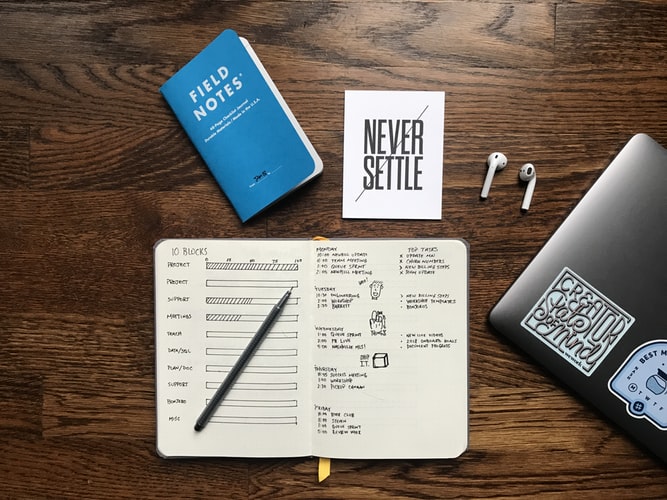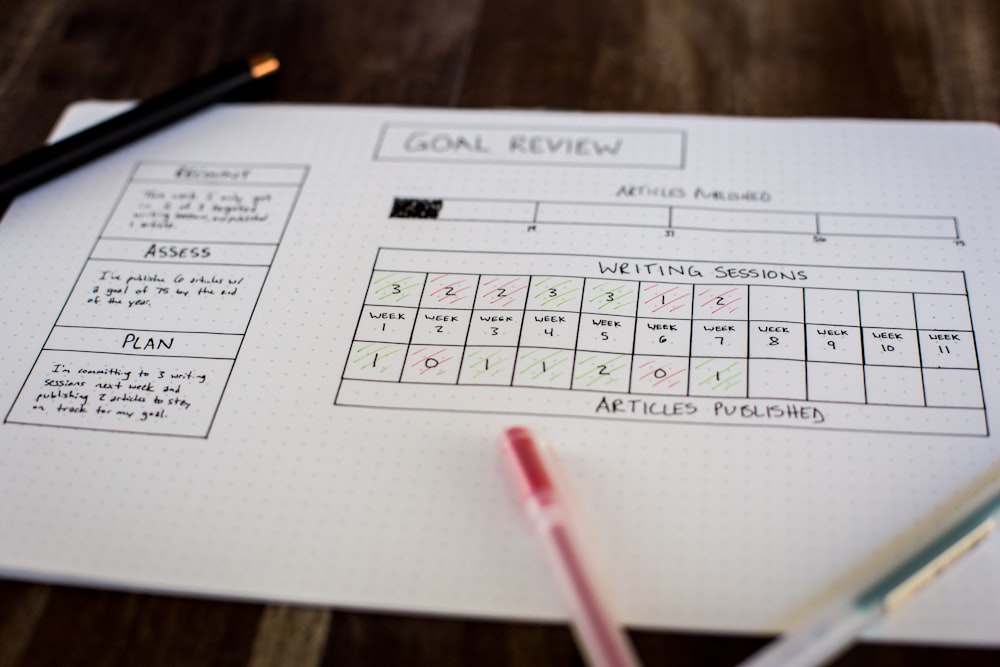
In a fast-paced world of skyrocketing economic, social, technological and political transformations, there’s an influx of information that can be too overwhelming. In our attempt to keep up with all of this, we end up feeling beaten down, overworked, overstrained, unproductive and burned out. With the extremely rapid transfer of information, there are multiple stimuli and countless distractions that prevents us to focus on the most important tasks at hand. This is where bullet journaling comes into play.
What are bullet journals?
Bullet journaling serves as a brain index and analog refuge that provides offline space needed to organize your tasks for optimum productivity, examine your thoughts from an objective distance and helps you focus on what truly matters. It’s a versatile system designed to organize your life in a way that you can reflect on where you’ve been, see where you are now, and help you plan for the future. It’s a cross between planner, diary, calendar, to-do list, sketchbook, and brain dump where you put anything that tipples your fancy, be it your thoughts, deepest darkest secrets, writing prompts, drawings, goals, ideas, and plans. There are tons of apps out there that can help you do the same thing, but the idea of bullet journaling is that all this planning and organizing by hand is helping you to be more mindful and connected to your everyday life.

What’s so helpful about it?
When we talk about mindfulness, we’re generally talking about a heightened awareness of the present moment and making decisions aligned with your values. Mindfulness helps you become aware of where you are, who you are and what you want. Bullet journaling has been proven invaluable in helping us be mindful about how we spend two of the most valuable resources in our life: time and energy. The act of writing by hand draws our mind into the present moment on a neurological level unlike any other capturing mechanism. It also helps declutter your overwhelmed brain so you can finally examine your thoughts from an objective point of view and gain clarity.
Another great thing about bullet journaling is that you don’t need any super special and expensive tools. You can use any notebook you have, though there are plenty of bullet journal friendly journals that will give you the basic structure so you can get right to work.
Basic Structure of a Bullet Journal
- Index – It’s the backbone of your journal. Basically, it’s the table of contents where you list certain items in your journal and indicate their respective pages. You can fill this in as you go along writing in the journal.
- Future Log – This is the space where you add all your important monthly and yearly event. This is where you put the typical calendar things and important dates you know now. It is basically a calendar spread to anything that is relevant for your long-term future planning.
- Monthly Log – This is where you keep track of date specific tasks, meetings, birthdays, etc that are happening over the course of the month. The classic way to do this is to write down the number of days of the month each line and then fill in what you know, and then refer back and add more as the month goes on.
- Collection Module – There’s no specific place for these, they are supposed to exist weaving in and out of your journal. These are pages where you want to dedicate for certain special things. Like say, you want to write down meal plan for the week, or keep track of your sleep or what books you read or inspirational quotes. Anything you think is worth its own page. You then put that in your Index, and if you need a new page for that collection, just note the new page in the index too. Make collections that make sense for you and your life, don’t feel like you need to add something simply because someone in Pinterest or Instagram did.
- Rapid Logging – It is the language in which bullet journal is written. Basically, this is a way of capturing information as bulleted list. It’s a great starting point if you’re just learning how to bullet journal. It can also be a great habit builder and great exercise for learning more about what sort of things you really care about.
This organizational trick can help you be mindful of who you are, improves your chronological memory, inject clarity, direction and focus on your days and helps you to avoid getting lost in the daily grind. Don’t be intimidated what you see out there. Using Bullet journals is an avenue to mindfulness and self-exploration, to help you examine who you are and what kind of life you want to live so it’s important to devise a bullet journal that works for you, fit your needs, makes you more productive, motivates you and brings you joy.
Want to boost your productivity and memory? Click here!
Comments
0 comments

Hello there, just became alert to your blog through Google,
and found that it is truly informative. I’m going to watch out
for brussels. I will appreciate if you continue this
in future. A lot of people will be benefited from your writing.
Cheers! Escape rooms
You have mentioned very interesting points! ps decent web site.?